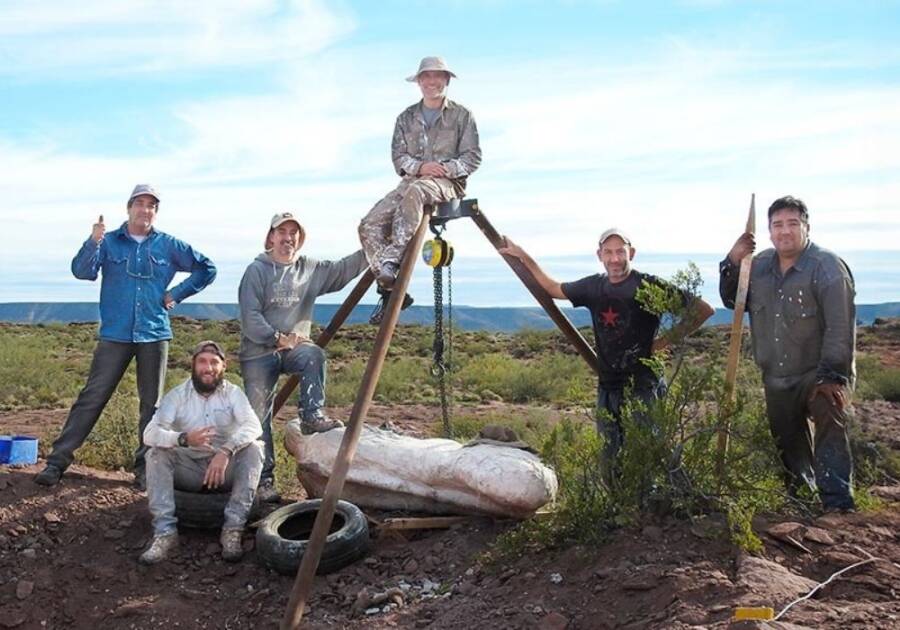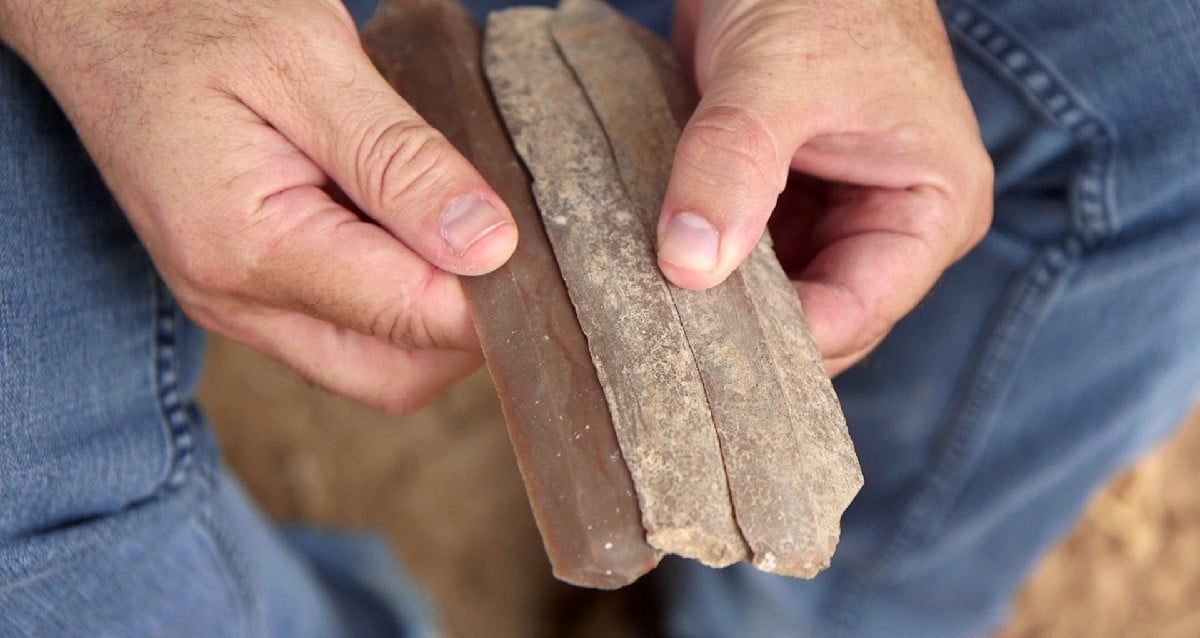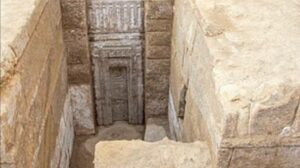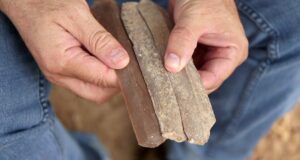Scientists Uncover Mysterious 95-Million-Year-Old Plant-Eating Dinosaur That Could Rewrite Prehistoric History
To break away the rock, the excavation team employed sledgehammers, points, hammers, chisels, rotary hammers, jackhammers and rock cutters. They transported the unearthed fossil with gypsum and burlap sacks and loaded it on a truck using a tripod and winch — no small feat, given that some of the bones weighed more than a ton.
The fossilized remains were then cleaned over the course of several months in a laboratory. In the end, researchers were left with 20 caudal vertebrae, 19 haemal arches, both ischia, pubis, part of the ilium, two femurs, two tibias, two fibulas, two astragali, and both nearly complete feet.

Flavio Bellardini/CONICETThe paleontology team that made the discovery.
Comparing these remains to other dinosaur species allowed the team to identify Astigmasaura genuflexa as a rebbachisaurid sauropod, but some unique morphological features let them know that this species was new to science.
“Astigmasaura genuflexa shares different conditions with other Rebbachisauridae, including anterior caudal vertebrae with tall neural spines and tetraradiate neural laminae, asymmetric middle haemal arches, mediolaterally compressed proximal tibiae, and femur with medially inclined distal condyles,” researchers wrote in the paper.
“Furthermore,” they continued, “Astigmasaura genuflexa shows a unique combination of diagnostic features that distinguish it from all other sauropods.”
Until now, the caudal and pelvic girdle anatomy of Rebbachisauridae was poorly known, but this new fossil has enlightened researchers and “suggests a greater taxonomic diversification within the family during the last stages of its evolutionary history than known before.”












Post Comment